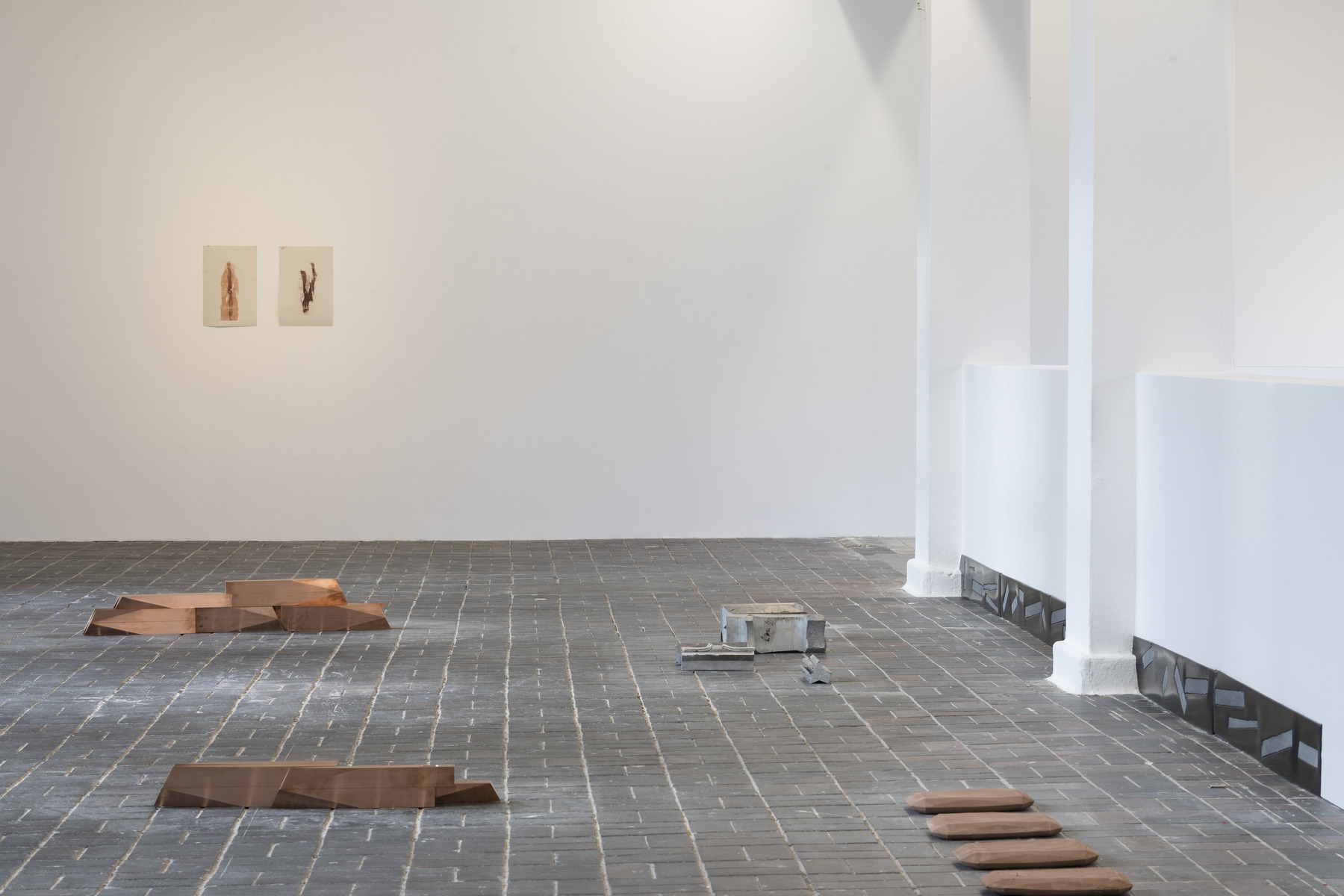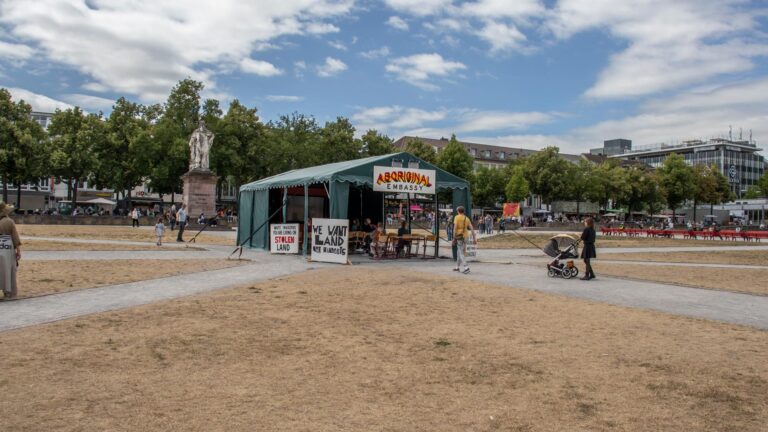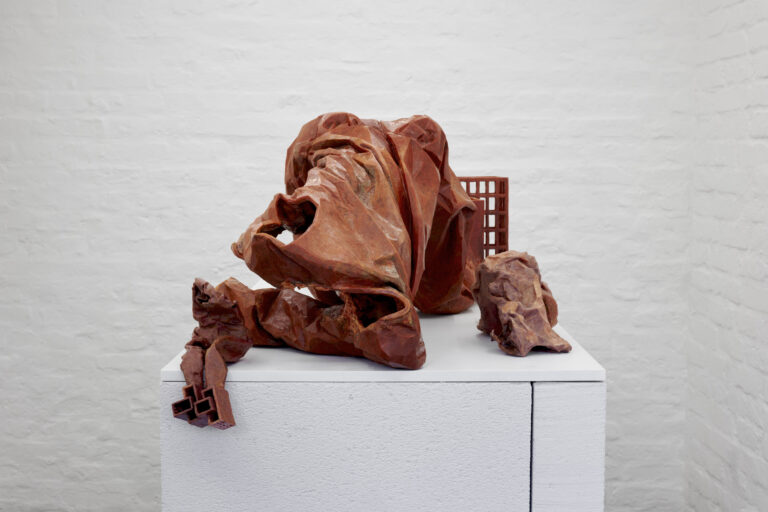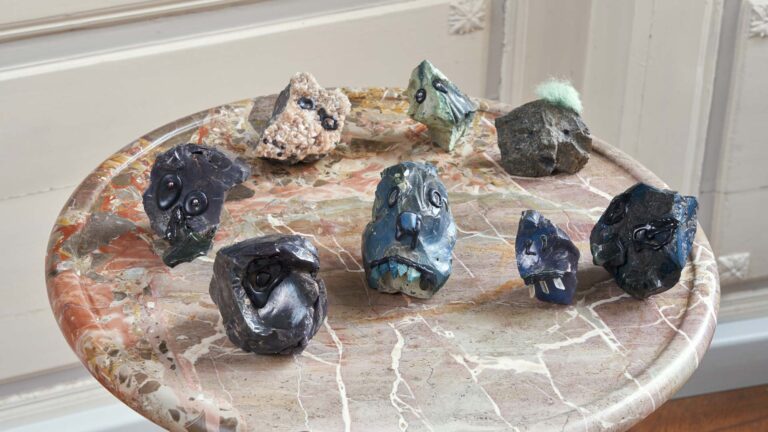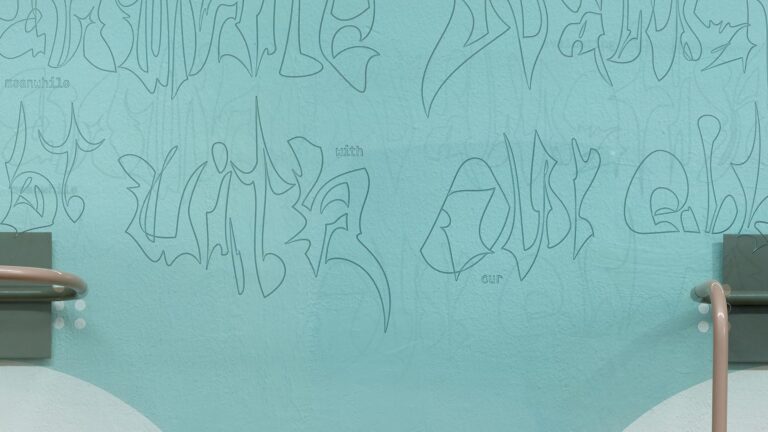Artist: Lucy Skaer
Exhibition title: Available Fonts
Venue: KW Institute for Contemporary Art, Berlin, Germany
Date: October 13, 2017 – January 7, 2018
Photography: Frank Sperling, all images copyright and courtesy of the artist and KW Institute for Contemporary Art, Berlin
Available Fonts marks the first solo exhibition by British artist Lucy Skaer (born 1975 in Cambridge, GB) in Berlin. Comprising a large body of new works embedded in a selection of preexisting work, the exhibition reflects on what it is to survey one’s practice. Lucy Skaer draws on preexisting imagery, both her own and others’, to make combinations of sculpture, film, and print. Form, meaning, and value are traced in her work through various states of formal and allegorical existence, governed by usage, trade, memory, and mass production. The tension between systems of representation and the firsthand experience is central to her work. Skaer is interested in how different forms of meaning can be shifted and made to associate or disassociate themselves from objects, and how complexity can be conveyed to the senses through an immediate experience. The title of the exhibition, Available Fonts, is a nod to the key role language plays in this exhibition and in Skaer’s work at large. Much of her work is reminiscent of an abstract syntax or a code that changes its meaning with each recombination of the available sculptural vocabulary.
The exhibition opens onto a constellation of works by Skaer from around the year 2010, which stood out as non compliant or resistant in some way, and which make and test the viability of visual language. Thames and Hudson (2009) is a large print on paper that displays the range of possible contact prints that can be taken from the surface of a common chair. Its bold shapes suggest typed language while refusing customary legibility. Interspersed with punctuation, the print masquerades as a text.
Rachel, Peter, Caitlin, John (2010) links three simultaneous 16mm films with a group of sculptures made of porcelain, pewter, bronze, copper, Burmese Blackwood, and plaster, which are positioned on tables outside the projection space. The work plays with the possibility of a bridge between the subjects of the films and the group of objects. The bridging element here derives from ticket punches used by railroad conductors on the Long Island Railroad in New York. Each conductor has an identifying shape to his or her ticket punch: round, crossed, square, eared, pointed, hexagonal. These punches have been used to clip individual frames of the film, leaving perforations in the film’s substance. The holes puncture and punctuate our experience of the films; like the gaze of an animal, they separate seeing from understanding. While the punches detract from our ability to read the image, they also add something else. Here, a curious translation from flat space into the third dimension takes place—a strategy that has become characteristic of Skaer’s work. The film is no longer an immaterial representation, but a physical object in situ that was cut and shaped, bearing a direct relation to the weighty shapes represented in the sculptures—a square hole punched into a red Rothko painting is ‘healed’ by the rich glow of a Square copper ingot, a cat’s gaze is equated with pewter, and the creamy parchment of the Gutenberg bible pairs with pale porcelain form.
Questions of syncopation and variation reappear in various guises, such as in the work One Remove (2016). The work consists of interlinking tables, shadowed by an elongated Moroccan rug. The modern table is a reproduction of Skaer’s kitchen table, multiplied to the point that it rids itself of any specific connotations or memories; the others are variations of an antique breakfast table inlaid with a band of lapis lazuli—perhaps an older equivalent of the modernist one. The constellation of once quotidian objects was made in response to the opening of The Waves, by Virginia Woolf, a novel which makes us aware of language as it is narrated like a play; the young protagonists describe a dawn as if speaking in a vacuum at the start of language itself. Woolf noted in the margin of an early draft of The Waves, “I am telling the story of the world from the beginning, and in a small room, whose windows are open.”
For the new commission La Chasse (2017), the artist continues her scrutiny of the conventional classification of objects and production methods in critical exchange with art historical motifs and references. Skaer aims to unite these leitmotifs that have long accompanied her work into one large-scale sculptural tableau that occupies the 2nd floor galleries. Here, she draws from her own oeuvre, de-abstracting and reworking her existing sculptures to become representations of animals in a medieval huntingscene. The scenes are drawn from the Livre de la Chasse, a medieval manuscript with miniature illuminations on Renaissance hunting techniques written between 1331–91. Skaer chooses a selection of motifs from the illustrations and unfolds them back into three dimensional space. A forest scene is made from several ‘flitches’ sculpted in aluminum, and a grid of cast terracotta lozenges mirrors the geometric backgrounds in the illuminations. These patterns traditionally suggest a space beyond the earthly realm, a gesture that sits in line with the metaphysical reflections prevalent in much of Skaer’s work and serve as abstract keys for the new sculptures. The artist explores the mutable meanings of these works and playfully critiques their language of desire, their status as definitive works of art, and their potential for self-reproduction.
The large black drawing Untitled (Black Drawing) (2015), that spans the upper and lower exhibition spaces, is an overlay of all the black drawings Skaer has made in this technique to date. Contrasting these constructions on the second floor, single offset prints are pulled directly from the plates that have recently been used to print the headline page of the Guardian paper.
Throughout the exhibition, various material insertions appear in the space and add to or alter the existing architecture of KW. Gum Rosin and frames that the artist clipped out from a film are set into one of the windows like young amber. Slices of slate are inserted into the exhibition walls like skirting boards, and synthetically grown quartz stones carry and prop up selected sculptures. These alterations correspond to the on-going series of transformations that the artist stages in her family home in Cambridge. There, she replaces, mends and alters the building’s core elements, leaving them charged in the process.
Skaer rejects the understanding of materials or works as finite things, recognizing every manifestation as only one latent version amongst many others. In this way, her sculptures function more like idiosyncratic processes, which insert themselves into a pre-existing chain of material conversions and symbolically charged transformations.
Lucy Skaer would like to thank Simon Harlow, Will Holder and Dr. Tahani Nadim.
Lucy Skaer, La Chasse, 2017, Installation view KW Institute for Contemporary Art, Photo: Frank Sperling
Lucy Skaer, La Chasse, 2017, Installation view KW Institute for Contemporary Art, Photo: Frank Sperling
Lucy Skaer, La Chasse, 2017, Installation view KW Institute for Contemporary Art, Photo: Frank Sperling
Lucy Skaer, La Chasse, 2017, Installation view KW Institute for Contemporary Art, Photo: Frank Sperling
Lucy Skaer, La Chasse, 2017, Installation view KW Institute for Contemporary Art, Photo: Frank Sperling
Lucy Skaer, La Chasse, 2017, Installation view KW Institute for Contemporary Art, Photo: Frank Sperling
Lucy Skaer, La Chasse, 2017, Installation view KW Institute for Contemporary Art, Photo: Frank Sperling
Lucy Skaer, La Chasse, 2017, Installation view KW Institute for Contemporary Art, Photo: Frank Sperling
Lucy Skaer, La Chasse, 2017, Installation view KW Institute for Contemporary Art, Photo: Frank Sperling
Background: Lucy Skaer, Untitled, 2010; Forefront: One Remove, 2016, with nine objects belonging to Rachel, Peter, Caitlin, John, 2010; Installation view KW Institute for Contemporary Art, Photo: Frank Sperling
Lucy Skaer, Installation view Available Fonts at KW Institute for Contemporary Art, Photo: Frank Sperling
Lucy Skaer, Rachel, Peter, Caitlin, John, 2010, Installation view KW Institute for Contemporary Art, Photo: Frank Sperling
Lucy Skaer, Rachel, Peter, Caitlin, John, 2010, Installation view KW Institute for Contemporary Art, Photo: Frank Sperling
Lucy Skaer, One Remove, 2016, with nine objects belonging to Rachel, Peter, Caitlin, John, 2010; Background: Untitled, 2010, Installation view KW Institute for Contemporary Art, Photo: Frank Sperling






